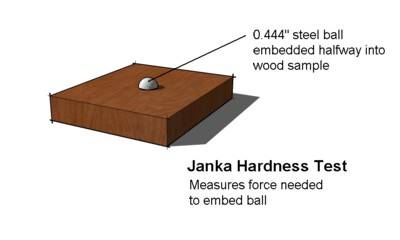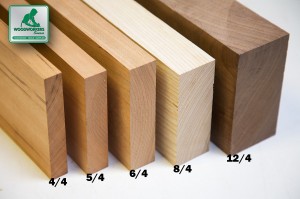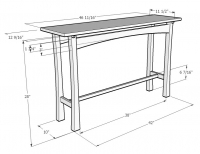
Iroko / African Teak Hardwood Sample (1/2"x3"x6")
SKU: samples-iroko$9.00 ea.
48 U.S. Ground Service
Why Choose Iroko?
Iroko offers superb weathering properties and a wonderful earthy burnished-brown color. Consider it the best alternative to high-priced teak. Medium to coarse texture with an interlocking grain that often produces interesting patterns. Open pores could be filled for a smooth finish, or left alone for a natural texture. Expect the wood to work easily with both power and hand tools.
Get your hands on a wood you've never tried before! It's simple. Samples are milled on all sides to the standard size of 1/2'' X 3'' X 6'', as determined by The International Wood Collectors Society, and include the shipping cost within the 48 U.S. Each one is labeled with the botanical and common names. Use these to test finishes and stains, to compare color and grain characteristics, etc.
| Thickness | 1/2" (≈ 1/2" approx) |
| Width | 3" |
| Length | 6" |
| Grade | Samples are milled on all sides, cut square and sanded; wood is a product of nature with inconsistencies from piece to piece. Use species samples as a guide, not a perfect representation. |
Woodworkers Also Recommend These
4.08
lbs /Bd. Ft.Wood Texture
Ease of Finishing
Color varies from pale golden brown to dark chocolate brown.
The tree is quite large and may reach 160 feet in height. The bole is straight, cylindrical, and may be clear of branches to 80 feet. Logs usually average about 30" diameter.
African Teak, Moreira, Abang, Doussie, Mvule, Iroko, Mvuli, Kambala, Odum
Boat building and marine work, furniture and cabinet work.
The Joys of Building with Great Woods
Understanding hardwood lumber starts right here with these wacky fractions.
If you're expecting perfect clear lumber 100% of the time, you're in for a surprise. Here's a summary of the hardwood lumber grades and what to expect from them.
Board feet isn't your everyday kind of math, but these three simple steps make it easy to figure out your project.
Here's a handy (and free) Excel worksheet that helps you estimate the lumber needs for your project.
Are woods poisonous? Hazardous to use in cutting boards or baby cribs? Find out here.
Wood is like a sponge, and it's always in a state of absorbing or releasing moisture to stay equalized with its environment. The problem with that is it also swells and shrinks. Here's what you need to know to protect your project.















